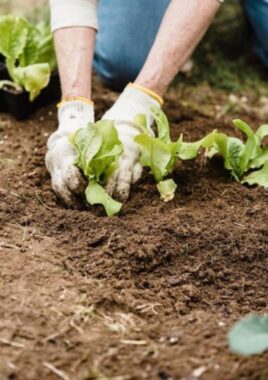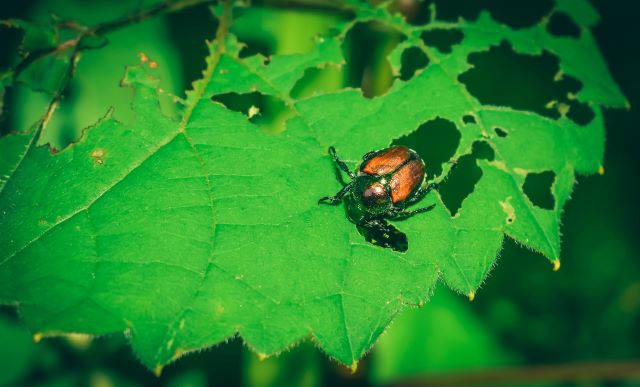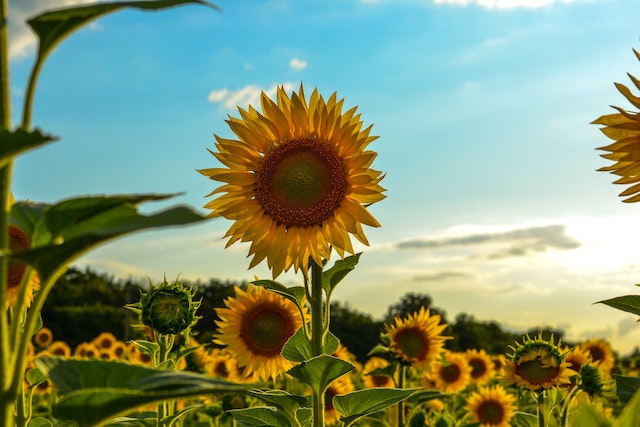For passionate gardeners, remembering plant names can sometimes be a challenge. Fear not! Properly managing and recalling plant names is achievable with a few simple strategies. Here’s how to stay organized and informed:
1. Label Everything: Utilize plant markers, tags, or labels when planting. Write down the plant’s name, species, and any relevant details. This not only assists in identifying plants but also helps in maintaining a gardening journal.
2. Maintain a Gardening Journal: Create a journal or log where you record details about your plants. Include their names, date of purchase/planting, growth progress, and any special care instructions. Add photos for visual reference.
3. Use Technology: Explore gardening apps or software that help organize plant information. Some apps allow you to scan barcodes or take photos for instant identification. Additionally, there are online databases and forums to seek plant identification and information.
4. Create a Plant Map: Design a garden layout or map and mark the positions of different plants. This visual aid can serve as a quick reference when trying to recall specific plant names or locations.
5. Association Techniques: Employ memory association methods to remember plant names. Link a plant’s characteristics to its name or create mnemonic devices to assist in recall.
6. Regular Review and Practice: Regularly review your gardening journal or notes. The more frequently you interact with the names and details of your plants, the better you’ll remember them.
7. Seek Help from Experts: When in doubt, consult with local garden centers, botanical gardens, or experienced gardeners. They can often provide valuable insights and help identify plants.
8. Be Patient with Yourself: Remember, learning and remembering plant names is a process. Don’t be discouraged by occasional lapses in memory; practice and persistence will improve your plant-naming skills over time.
By implementing these strategies, you’ll find it easier to recall and manage the names of your beloved plants, enriching your gardening experience and fostering a deeper connection with your garden’s greenery.
Empower your gardening journey by staying organized with plant names! Utilize these tips and strategies to keep track of your garden’s diverse flora and enhance your gardening knowledge.
Thanksgiving, a time for gratitude and celebration, isn’t just about the sumptuous meals but also embracing nature’s beauty. Imagine a Thanksgiving celebration nestled in a vibrant garden—a living canvas painted with autumnal hues, blooming flowers, and the season’s final harvest. Let’s explore the charm and significance of a Thanksgiving garden, adding depth and appreciation to this cherished holiday season.
The Essence of Thanksgiving Gardens
Thanksgiving gardens are tributes to the season’s abundance—a living display of gratitude for nature’s gifts. They blend rich autumnal colors, blooming flowers, and the last harvest of fruits and vegetables. These gardens symbolize the earth’s generosity and the cycle of life.
Crafting Your Thanksgiving Garden
Start by capturing the essence of fall. Include vibrant chrysanthemums, fiery marigolds, and the rustic appeal of ornamental kale. Add ornamental grasses for texture and movement. Integrate elements like pumpkins, gourds, and cornstalks for a rustic, authentic feel.
Symbolism in Plantings
Each plant holds deeper meaning. Sunflowers symbolize adoration, while lavender embodies tranquility. Incorporating these plants adds both beauty and significance to your garden.
Nurturing Gratitude
Tending to a Thanksgiving garden fosters a connection with nature and encourages gratitude. Caring for plants reminds us to appreciate the world’s beauty and the gifts it offers.
A Nature-Inspired Celebration
Imagine Thanksgiving gatherings amid your garden’s serenity. An outdoor space set amidst this natural splendor offers a picturesque setting for heartfelt conversations and cherished memories.
Conclusion: Cultivating Gratitude Through Nature
A Thanksgiving garden goes beyond plants; it’s a living expression of thankfulness. It invites us to pause, appreciate, and celebrate the world’s abundance. As we nurture our gardens, we nurture our hearts, fostering gratitude for the beauty and gifts around us.
Consider embracing a Thanksgiving garden—a living tribute that enriches the holiday, reminding us of the beauty and bounty to be grateful for.
#ThanksgivingGardens #Nature’sGratitude #HarvestCelebration #SeasonalBeauty 🍂🌻
Enhanced Growth: Unlocking the Potential of Companion Planting 🌱🚀
In the realm of companion planting, enhanced growth stands as a testament to the power of strategic plant partnerships. By understanding the dynamics between plants and harnessing their synergies, gardeners can unlock a realm of possibilities for flourishing gardens.
Optimizing Nutrient Absorption:
Companion planting isn’t merely about placing plants side by side; it’s about creating a community where each member contributes to the overall well-being. Certain plants, when paired strategically, enhance each other’s nutrient absorption. For instance, nitrogen-fixing plants can benefit neighboring plants by enriching the soil with this essential nutrient, promoting robust growth.
Maximizing Yield:
Pairing plants with complementary growth habits can optimize space and resources. Tall plants providing shade can protect more delicate, sun-sensitive companions. This synergy ensures that each plant receives the light it needs, fostering healthy growth and maximizing overall yield.
Improving Soil Health:
Some plants possess unique qualities that enhance soil health. Legumes, for example, have nitrogen-fixing abilities, enriching the soil with this vital nutrient. Integrating them into your garden as companions can lead to healthier soil, providing a fertile foundation for plants to thrive.
Biodiversity Boost: Nurturing a Resilient Garden Ecosystem 🌿🌼
Companion planting goes beyond enhancing individual plant growth; it fosters biodiversity, creating a garden ecosystem that is robust and adaptable.
Diverse Plant Pairings:
Pairing a variety of plants with different growth habits and attributes promotes biodiversity. This diversity isn’t just aesthetically pleasing; it also helps prevent the rapid spread of pests and diseases. A mix of tall and short plants, flowering and non-flowering, creates a balanced and visually appealing garden tapestry.
Natural Pest Control:
Certain companion plants act as natural deterrents to pests. For example, planting aromatic herbs like basil and rosemary near susceptible plants can repel unwanted insects. This natural pest control minimizes the need for chemical interventions, contributing to a healthier and more sustainable garden.
Resilience to Environmental Changes:
A biodiverse garden is better equipped to withstand environmental challenges. Different plants have varying tolerance levels to pests, diseases, and weather conditions. This diversity ensures that even if one type of plant faces challenges, others can thrive, maintaining the overall health of the garden.
Eco-Friendly Gardening: Nurturing Nature’s Balance 🌿🌍
Companion planting aligns seamlessly with the principles of eco-friendly gardening, offering a natural and sustainable approach to cultivating your green space.
Reducing Chemical Dependency:
By harnessing the natural attributes of companion plants, gardeners can reduce their reliance on synthetic pesticides. For instance, planting marigolds alongside vegetables can deter nematodes, eliminating the need for chemical nematicides.
Sustainable Soil Management:
Companion planting contributes to sustainable soil management practices. Nitrogen-fixing plants, like legumes, improve soil fertility naturally, reducing the need for synthetic fertilizers. This sustainable approach ensures the long-term health of both your garden and the broader environment.
Promoting Balanced Ecosystems:
Creating a garden that mimics natural ecosystems encourages the development of balanced, self-sustaining systems. By fostering beneficial relationships between plants, insects, and soil microorganisms, companion planting contributes to the overall health and resilience of the ecosystem.
In embracing enhanced growth, biodiversity boost, and eco-friendly gardening through companion planting, gardeners not only cultivate beautiful and productive spaces but also become stewards of a balanced and sustainable natural environment. This holistic approach to gardening invites individuals to connect with nature, fostering a deeper appreciation for the intricate web of life in their own backyards.
Creating a biodiverse and eco-friendly garden involves strategic pairing of plants that complement each other’s growth habits, deter pests, and enhance overall sustainability. Here are some ideal plant pairs to discover for a thriving and harmonious garden ecosystem:
1. Tomatoes and Basil:
Benefits:
- Pest Deterrence: Basil repels certain pests that commonly affect tomatoes, such as aphids and mosquitoes.
- Improved Flavor: Companion planting with basil is believed to enhance the flavor of tomatoes.
2. Beans and Corn:
Benefits:
- Nitrogen Fixation: Beans are nitrogen-fixing plants, enhancing the soil’s nitrogen content, which benefits the nitrogen-hungry corn.
- Vertical Space Utilization: Corn provides a natural trellis for beans to climb, optimizing space.
3. Carrots and Onions:
Benefits:
- Pest Control: Onions deter carrot flies, reducing the likelihood of carrot crop damage.
- Space Optimization: Carrots grow underground, while onions grow above, making efficient use of space.
4. Cucumbers and Nasturtiums:
Benefits:
- Pest Repellent: Nasturtiums act as a natural deterrent for cucumber beetles, protecting cucumber plants.
- Edible Flowers: Nasturtium flowers are edible and add a peppery flavor to salads.
5. Roses and Garlic:
Benefits:
- Pest Deterrence: Garlic deters common rose pests like aphids and provides natural protection.
- Soil Health: Garlic has antibacterial and antifungal properties, contributing to overall soil health.
6. Marigolds and Vegetables:
Benefits:
- Nematode Control: Marigolds release compounds that deter nematodes harmful to many vegetables.
- Color and Beauty: Marigolds add vibrant colors to the garden, enhancing its visual appeal.
7. Apple Trees and Chives:
Benefits:
- Pest Control: Chives planted around apple trees deter pests and enhance overall orchard health.
- Companion Aesthetics: Chives’ slender stalks complement the stature of apple trees.
8. Brassicas and Aromatic Herbs:
Benefits:
- Pest Repellent: Aromatic herbs like rosemary and thyme planted alongside brassicas deter cabbage worms and aphids.
- Flavor Enhancement: Herbs can enhance the flavor of certain brassica crops.
9. Strawberries and Borage:
Benefits:
- Pollinator Attraction: Borage attracts pollinators, enhancing strawberry pollination and fruit production.
- Soil Enrichment: Borage’s deep roots bring up nutrients from the soil, benefiting strawberries.
10. Squash and Radishes:
Benefits:
- Pest Control: Radishes deter squash borers, protecting squash plants.
- Space Utilization: Radishes mature quickly, providing an early harvest before squash plants spread.
Discovering these ideal plant pairs and incorporating them into your garden fosters a balanced and eco-friendly environment. Experimenting with companion planting not only contributes to the health of individual plants but also promotes the sustainability of the entire garden ecosystem.
Your garden is a sanctuary of beauty, hard work, and growth. But, lurking in the foliage and beneath the soil, there are adversaries that can turn your gardening dreams into a nightmare. We’re talking about garden pests, the uninvited guests who can wreak havoc on your plants and disrupt the harmony of your green haven. In this article, we’ll introduce you to some of your worst garden enemies, how to identify them, and methods to defend your garden against their destructive tendencies.
1. Aphids (Aphidoidea)
Aphids are tiny, soft-bodied insects that feed on the sap of plants. They reproduce rapidly and can quickly infest your garden. Look for clusters of small, pear-shaped insects on the undersides of leaves. Aphids can cause wilting, yellowing, and curling of leaves.
2. Slugs and Snails (Gastropoda)
Slugs and snails are notorious for their appetite for young, tender plants. These slimy creatures feed on leaves, leaving behind ragged holes and damage. They are active during the night and on damp days, making them challenging to spot.
3. Caterpillars
Caterpillars, the larval stage of moths and butterflies, can devour foliage, flowers, and fruits. While some caterpillars are harmless, others, like the tomato hornworm, can cause significant damage. Look for leaf-chomping and frass (insect droppings) as signs of their presence.
4. Deer
Deer are charming, graceful creatures, but in your garden, they can be destructive herbivores. They feed on a variety of plants and can quickly strip your garden of its beauty. Fencing is often the most effective way to keep them at bay.
5. Rabbits
These small mammals have a voracious appetite for garden plants. They nibble on tender shoots and can severely damage your garden. Installing rabbit-proof fencing is a common defense.
6. Whiteflies (Aleyrodidae)
Whiteflies are tiny, white insects that resemble moths. They feed on the undersides of leaves, sucking out plant juices. Their feeding can lead to yellowing, stunted growth, and the transmission of plant diseases.
7. Japanese Beetles (Popillia japonica)
Japanese beetles are known for their voracious appetite and the damage they inflict on a wide range of plants. They leave skeletonized leaves in their wake and can be particularly destructive during their summer feeding frenzy.
Defense Strategies
Companion Planting: Some plants naturally repel pests. Consider planting marigolds, chrysanthemums, or garlic near susceptible plants.
Handpicking: For larger pests like caterpillars, slugs, and snails, handpick them off your plants and dispose of them.
Beneficial Insects: Encourage beneficial insects like ladybugs, lacewings, and parasitic wasps, which feed on garden pests.
Natural Predators: Attract birds, frogs, and toads to your garden, as they are natural predators of many pests.
Row Covers: Use row covers to protect your plants from pests like aphids and whiteflies.
Organic Sprays: Consider using organic insecticidal soaps or neem oil to control garden pests.
Remember, in the battle against garden pests, it’s essential to strike a balance. While you want to protect your plants, it’s also crucial to maintain a healthy ecosystem in your garden. By identifying your worst garden enemies and employing effective defense strategies, you can preserve the beauty and vitality of your garden, ensuring it remains the sanctuary you’ve worked so hard to create.
Having a small outdoor space doesn’t mean you have to sacrifice the beauty and functionality of a garden. In fact, designing a garden in a limited space can be a rewarding and creative endeavor. Whether you have a tiny urban balcony, a compact courtyard, or a petite backyard, these garden design tips will help you make the most of your small space and turn it into a lush, inviting oasis.
1. Plan and Prioritize
Start by planning your garden layout. Measure the available space and consider the dimensions carefully. Think about how you want to use the space—whether it’s for relaxation, entertaining, or growing plants. Prioritize your needs to make the most of the area.
2. Vertical Gardening
In small spaces, vertical gardening is a game-changer. Install trellises, wall-mounted planters, or shelving units to take advantage of vertical surfaces. Vines, climbers, and compact plants can thrive in these setups, adding greenery without eating up floor space.
3. Choose Compact Plants
Opt for dwarf or compact varieties of plants and shrubs. These smaller plants are not only easier to manage but also fit well in small gardens without overwhelming the space. Look for mini roses, dwarf fruit trees, and small-scale ornamental grasses.
4. Container Gardening
Containers are a small garden’s best friend. Use pots and containers of various sizes and shapes to grow your favorite plants. Container gardening allows you to rearrange your garden, create focal points, and even move plants around to follow the sun.
5. Select Multi-Functional Furniture
When it comes to garden furniture, choose pieces that serve multiple purposes. For example, select a bench with built-in storage or a coffee table that doubles as a plant stand. This way, you’ll maximize functionality without cluttering your space.
6. Create Zones
Divide your small garden into distinct zones. Consider a seating area, a planting area, and perhaps a water feature or sculpture. Creating zones helps define the purpose of each part of your garden and adds structure.
7. Mirror Illusion
Mirrors can visually expand a small garden. Strategically place a mirror on a wall or fence to create an illusion of space and reflect the greenery, making your garden seem larger and more open.
8. Use Light Wisely
Well-placed outdoor lighting can extend the usability of your small garden into the evening. String lights, lanterns, or small spotlights can add ambiance and make your garden feel more spacious.
9. Keep It Tidy
Maintain a clutter-free garden. Regularly prune and deadhead plants, and keep the space organized. An organized garden not only looks more spacious but is also more enjoyable to spend time in.
10. Embrace Simplicity
In small spaces, less can be more. A minimalist design with a well-chosen color scheme can create a sense of openness and tranquility. Select a limited color palette for plants and accessories to create a cohesive and visually pleasing atmosphere.
Designing a garden in a small space requires thoughtful planning and creativity, but the rewards are worth it. With these tips, you can transform your compact outdoor area into a charming and inviting garden retreat that you’ll cherish throughout the seasons. Small may be the size, but the potential for beauty and enjoyment is boundless.
Planting perennials in the fall can set the stage for a beautiful garden with year-round blooms. Fall is an excellent time to establish perennials because the soil is still warm, but the air is cooler, which helps the plants establish strong root systems. Here’s a list of many perennials you can plant in the fall:
- Peonies (Paeonia): These classic, large-flowered perennials produce stunning blooms in various colors and are known for their longevity.
- Daylilies (Hemerocallis): Daylilies come in a wide range of colors and are known for their hardiness and adaptability.
- Lavender (Lavandula): Fragrant and visually appealing, lavender is a favorite for its aromatic blooms.
- Sedum (Sedum spectabile): Also known as stonecrop, sedum offers late-season color and is drought-tolerant.
- Coneflowers (Echinacea): These native perennials are prized for their colorful, daisy-like blooms and their attractiveness to pollinators.
- Black-Eyed Susans (Rudbeckia): These bright, golden flowers add a cheerful touch to the garden.
- Salvia (Salvia spp.): Salvias come in various species and colors, and they’re excellent for attracting pollinators.
- Hostas (Hosta spp.): Loved for their foliage, hostas are ideal for shady spots and come in various leaf shapes and colors.
- Irises (Iris spp.): Irises provide elegant, tall blooms and come in a range of colors.
- Dianthus (Dianthus): Known for their fringed, sweetly scented flowers, dianthus is a charming addition.
- Asters (Aster spp.): These late-blooming perennials offer a burst of color in the fall garden.
- Hellebores (Helleborus): Often called the “Christmas Rose,” hellebores bloom in late winter and early spring.
- Bleeding Hearts (Dicentra spectabilis): These unique perennials feature heart-shaped blooms in shades of pink and white.
- Autumn Joy Sedum (Sedum x ‘Autumn Joy’): This cultivar of sedum is renowned for its fall blooms, which transition from pink to rust.
- Russian Sage (Perovskia atriplicifolia): Russian sage offers silvery foliage and spikes of lavender-blue flowers.
- Achillea (Achillea millefolium): Known as yarrow, this perennial produces flat clusters of flowers in various colors.
- Catmint (Nepeta): Catmint is a favorite of cats and gardeners alike, with its aromatic foliage and blue or purple flowers.
- Hardy Geraniums (Geranium spp.): These low-maintenance perennials come in various species and offer a profusion of colorful blooms.
When planting perennials in the fall, be sure to choose healthy plants, prepare the soil by amending it with organic matter, and water thoroughly. This will help ensure that your perennials establish strong root systems before the winter and grace your garden with year-round blooms in the seasons to come.
Heirloom seeds are seeds that have been passed down through generations because of their unique and desirable characteristics. To create heirloom seeds, you’ll need to follow specific steps to maintain the purity of the plant variety. Here’s a basic guide on how to make heirloom seeds:
- Select the Right Plants: Choose a plant variety that you want to save as heirloom seeds. It’s essential to start with healthy, disease-free, and vigorous plants that exhibit the desired traits you want to preserve.
- Isolate Varieties: To prevent cross-pollination with other varieties, you should isolate the plant you want to save as an heirloom. This typically involves growing the plant away from other varieties of the same species, with enough distance or barriers to prevent pollen transfer.
- Save Seeds from the Best Plants: Choose the best-performing plants in terms of growth, yield, taste, or any other characteristic you value. Collect seeds from these plants only, as they are most likely to pass on the desirable traits.
- Allow Seeds to Mature: Let the fruits or seed pods fully mature on the plant. For some plants, this might involve waiting until they start to dry out or turn brown.

- Harvest and Clean Seeds: Harvest the mature fruits or seed pods and carefully extract the seeds. For many plants, you can simply open the fruit or pod and collect the seeds. Rinse and clean the seeds to remove any remaining pulp or debris.
- Dry Seeds: Lay the cleaned seeds on a paper towel or tray and allow them to air-dry for a few weeks. Ensure they are completely dry before storing to prevent mold and rot.
- Label and Store: Label the seeds with the plant variety, date of harvest, and any specific information about the parent plants. Store the seeds in a cool, dark, and dry place in a sealed container like a glass jar or airtight bag. Proper storage can help maintain seed viability.
- Share and Preserve: The key to heirloom seeds is sharing them with other gardeners and continuing to grow and save them year after year. This helps preserve the genetic diversity and unique characteristics of the variety.
- Regular Maintenance: To maintain the purity of the heirloom variety, you should continue to isolate the plants from other varieties and select seeds from the best-performing plants each year.
- Record Keeping: Maintain detailed records of your seed-saving efforts, noting any changes or adaptations in the plant variety over time. This information can be valuable for future generations.
By following these steps and being diligent in your seed-saving efforts, you can contribute to the preservation of heirloom plant varieties and ensure that their unique characteristics are passed down to future generations. Then next year you can start off a whole new series of plants.







